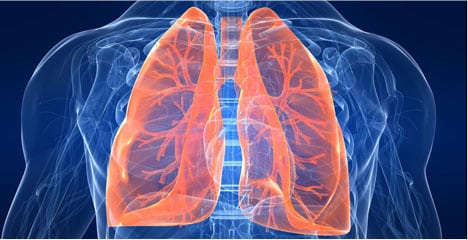Early recognition of respiratory acidosis helps prevent complications and escalation. This guide explains the disorder in clinical terms and plain language. You will see core causes, diagnostic cues, expected compensation, and practical management steps.
Key Takeaways
- Core concept: CO2 retention lowers blood pH and drives symptoms.
- Differentiate acute from chronic by history and bicarbonate change.
- Address causes first; ventilatory support may be needed.
- Use ABG patterns and compensation to check plausibility.
What Is Respiratory Acidosis?
Respiratory acidosis occurs when ventilation cannot remove enough carbon dioxide (CO2). CO2 dissolves into carbonic acid, which lowers blood pH (acidemia). Arterial blood gas (ABG) typically shows elevated PaCO2 and reduced pH. Bicarbonate (HCO3−) may rise as the kidneys retain base to buffer acid over time.
In plain terms, the lungs under-ventilate, CO2 builds up, and the blood becomes more acidic. Acute cases develop quickly and overwhelm buffering systems. Chronic cases evolve slowly, allowing renal compensation to increase HCO3−. Distinguishing these patterns guides monitoring intensity and therapy choices.
Causes and Pathophysiology
Reduced minute ventilation drives CO2 retention. Common triggers include obstructive lung disease, severe asthma, neuromuscular weakness, chest wall restriction, and central nervous system depressants such as opioids or sedatives. Obesity hypoventilation and sleep-disordered breathing can also contribute, especially overnight.
Airflow limitation in COPD and asthma increases dead space and work of breathing. Over time, fatigued respiratory muscles cannot sustain ventilation, and hypercapnia develops. When addressing obstructive disease, combination inhalers can support airway tone. For inhaled triple therapy context, see Trelegy Ellipta. For examples of ICS/LABA options discussed in exacerbation care, review Symbicort. Where long-acting anticholinergic support is considered, Spiriva Respimat Inhaler provides a practical reference for bronchodilation.
Neuromuscular disorders (e.g., myasthenia gravis), chest trauma, and severe pneumonia can reduce effective ventilation. Sedative intoxication suppresses brainstem drive. For background prevalence and mechanisms, a concise StatPearls review summarizes typical etiologies and physiologic responses.
Diagnosis and ABG Interpretation
Confirming respiratory acidosis diagnosis relies on clinical context plus ABG. Expect low pH, elevated PaCO2, and a normal or increased bicarbonate depending on acuity. Check oxygenation (PaO2 or SpO2), lactate, and electrolytes. Review medications and exposures for sedatives or salicylates, which may change the picture.
Interpretation steps: define primary disorder, assess compensation, then look for mixed acid-base states. In acute hypercapnia, HCO3− rises slightly; in chronic states, HCO3− rises more. When the observed pattern deviates from expectations, consider a second process, such as metabolic alkalosis from diuretics or metabolic acidosis from sepsis. For fundamentals on ABG thresholds and complications of CO2 retention, see the Merck Manual.
If you want broader context across lung conditions, browse our Respiratory Articles for related diagnostic patterns and updates.
Acute vs Chronic: Compensation and Clinical Clues
History and timing help separate acute from chronic states. Acute cases often present with sudden somnolence, headache, and dyspnea after a trigger like opioid use or a severe asthma attack. Chronic hypercapnia usually reflects longstanding lung disease, morning headaches, and baseline fatigue, often with compensatory metabolic changes.
On ABG, both forms show hypercapnia. However, bicarbonate behavior differs. In chronic hypercapnia, the kidneys retain more bicarbonate, partially normalizing pH. Acute respiratory acidosis compensation is smaller and cannot fully correct acidemia. Look for consistent trends across serial gases and clinical improvement with targeted therapy.
Compensation: Acute vs Chronic
Compensation follows predictable patterns used as bedside checks. A practical rule: in acute hypercapnia, HCO3− increases about 1 mEq/L for each 10 mm Hg rise in PaCO2 above 40. In chronic hypercapnia, expect an increase of roughly 3.5–4 mEq/L per 10 mm Hg. If bicarbonate deviates notably from these guides, suspect an additional metabolic disorder. Also review chloride, anion gap, and potassium because electrolyte shifts can obscure interpretation. For potassium disturbances that may accompany acid-base shifts, our Hypokalemia Overview explains clinical effects and correction principles.
Management and Treatment
Management starts with cause control and safe ventilation. Elevate head-of-bed, clear secretions, and address reversible bronchospasm. Noninvasive ventilation may help selected patients by unloading fatigued muscles. Oxygen should be titrated thoughtfully in chronic hypercapnia, balancing hypoxemia correction with CO2 retention risk. Avoid rapid overcorrection unless instability mandates aggressive support.
Bronchodilators, inhaled corticosteroids, and careful diuretic use can support patients with comorbid lung disease. For an ICS reference used in maintenance regimens, see Pulmicort Nebuamp as an example of nebulized budesonide. In advanced obstruction with frequent exacerbations, guideline-directed inhalers and pulmonary rehabilitation may improve symptoms and reduce hospitalizations. Coordinate changes with the treating team, and reassess ABG and ventilation status after interventions.
When sedation or opioid effect is suspected, check a medication list and consider reversal agents per protocol. Treat pneumonia, pulmonary edema, or pulmonary embolism based on clinical findings and imaging. Ventilatory support strategies vary by setting; institutional protocols should guide initiation, settings, and weaning in both acute and chronic contexts.
Complications and When to Escalate
Unchecked hypercapnia can cause respiratory acidosis complications, including decreased consciousness, confusion, arrhythmias, and hemodynamic instability. Chronic CO2 retention may contribute to pulmonary hypertension and right heart strain. Monitor for rising PaCO2, dropping pH, or deteriorating mental status. Worsening ABG values despite initial measures should prompt urgent reassessment.
Consider escalation when work of breathing remains high, oxygenation is unsafe, or ventilation fails to improve. Screen for coexisting sleep-disordered breathing if daytime hypercapnia persists after stabilization. For an overview on weight and sleep-related breathing syndromes, see Zepbound for Sleep Apnea to understand how sleep apnea management intersects with ventilation.
How It Differs From Respiratory Alkalosis
Respiratory alkalosis vs acidosis can be distinguished by direction of pH and CO2. In alkalosis, patients hyperventilate and blow off CO2, raising pH. Triggers may include pain, anxiety, pregnancy, sepsis, altitude exposure, or early salicylate toxicity. Symptoms often include lightheadedness, paresthesias, and chest discomfort.
In contrast, acidosis stems from hypoventilation and CO2 retention. Mental clouding, headache, and somnolence are common, especially in severe cases. ABG separates the two conditions reliably. A careful medication review, exposure history, and bedside observation generally identify the driving process.
Related Metabolic Disorders
Acid-base disorders frequently overlap. Metabolic acidosis treatment focuses on the underlying cause, such as sepsis, renal failure, or toxin ingestion. In those cases, respiratory compensation increases ventilation to lower PaCO2. If lungs cannot augment ventilation, a mixed picture emerges and pH may fall sharply.
Gap acidosis from diabetic ketoacidosis can coexist with obstructive lung disease. Prompt recognition changes priorities for fluids, insulin, and ventilation. For a broader primer on patterns and workup, see our Metabolic Acidosis Guide. For diabetes-related ketosis management principles, consult the Diabetic Ketoacidosis Guide to understand differential priorities when both processes are present.
Recap
Respiratory acidosis reflects inadequate ventilation causing CO2 retention and lowered pH. Identify the cause, confirm with ABG, and judge compensation to detect mixed disorders. Treat triggers, support ventilation, and monitor for clinical turning points. When the pattern does not fit, recheck assumptions and broaden the differential.
Note: External references in this article provide general thresholds and mechanisms. Always follow local protocols and specialist guidance when managing acute respiratory failure.
This content is for informational purposes only and is not a substitute for professional medical advice.


